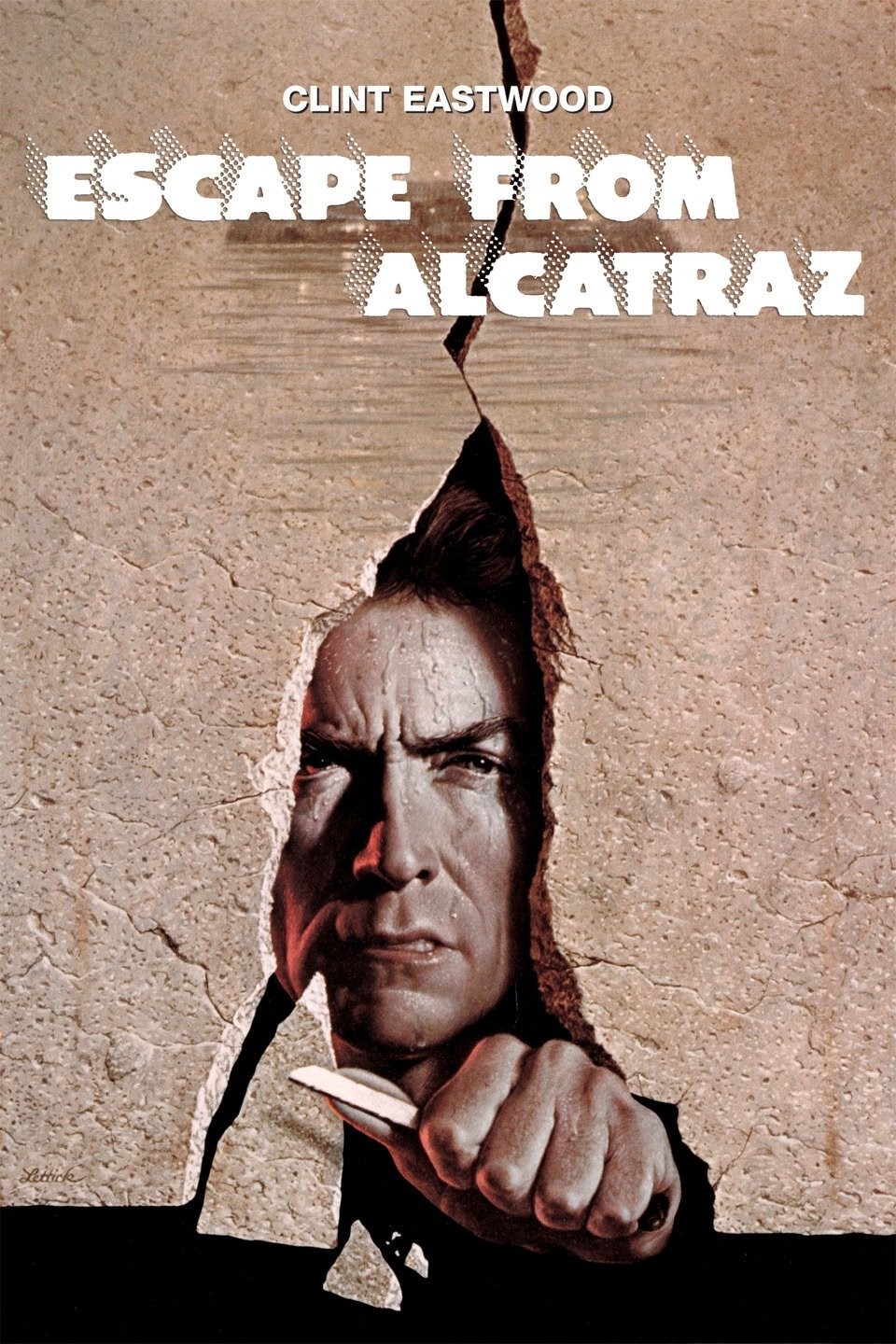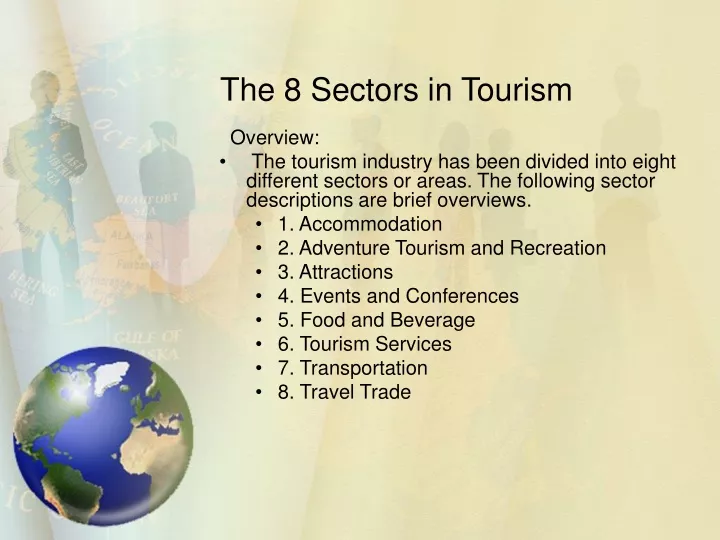What is Dark Tourism
Dark tourism refers to travel to sites historically associated with death, suffering, or tragedy, and it forms part of the niche tourism sector—specifically special interest tourism. Far from being a pursuit of morbid curiosity, dark tourism offers meaningful opportunities for education, emotional engagement, and historical reflection. Lennon and Foley (2000) first defined the concept as a way for people to confront mortality and history through visiting locations such as battlefields, genocide memorials, or prisons. Many travellers are drawn to these destinations not for entertainment, but to gain a deeper understanding of social injustice, political violence, and human resilience. At sites like Auschwitz, Ground Zero in New York, or Alcatraz Island, visitors are encouraged to engage with themes of memory, trauma, and accountability. These experiences often trigger "moral contemplation"1, prompting tourists to question the ethical consequences of the past and the lessons it holds for the present. As such, dark tourism has emerged as a powerful form of heritage travel, especially for those seeking more emotionally and intellectually rich experiences than typical leisure tourism offers.

Despite its growing popularity, dark tourism raises ethical questions about how we memorialise tragedy and the ways in which such sites are marketed and consumed. The fine line between respectful remembrance and commodification is often debated, particularly when sites are transformed into overly commercialised attractions or presented with sensationalist narratives. For example, the rise in tourism to Chernobyl following the 2019 HBO series sparked criticism when some visitors posted insensitive photos at the site of a nuclear disaster2. However, when handled with authenticity, dark tourism can foster empathy, intercultural understanding, and support for social justice causes. Sites like Alcatraz Island, which educates visitors about incarceration, civil rights, and Indigenous activism, demonstrate how dark tourism can responsibly inform the public while supporting local economies and preservation efforts3. Ultimately, dark tourism thrives when it is grounded in truth, ethical storytelling, and community involvement, enabling tourists to honour the past while learning how to shape a more compassionate future.

History of Alcatraz
Alcatraz Island located approximately 2 kilometres offshore from San Francisco, California, has a rich and complex history. Initially developed as a military fort in the 1850s, it later became a military prison before being converted into a federal penitentiary in 1934. The prison was designed to house the most dangerous criminals, including Al Capone and Robert Stroud, the "Birdman of Alcatraz"4. Due to high operational costs and deteriorating infrastructure, the prison was closed in 19635.

In 1969, Alcatraz gained prominence again when Native American activists occupied the island to protest federal policies related to Indigenous peoples. The occupation lasted 19 months and became a significant event in the American Indian Movement, highlighting issues of Indigenous rights and sovereignty6. Today, Alcatraz is managed by the National Park Service and attracts over 1.5 million visitors annually, serving as a poignant reminder of its multifaceted past7.

Who Visits and Why?
Alcatraz appeals to a diverse range of tourists, particularly those classified as Mid-Centric and Allocentric according to Plog’s Psychographic Typology. Mid-Centric tourists seek structured experiences with a touch of adventure, while Allocentric tourists are more inclined towards novel and challenging destinations8. Visitors are drawn to Alcatraz for various reasons, including an interest in criminal justice history, a desire to engage with sites of protest and activism, curiosity about the psychological effects of isolation, and fascination with supernatural stories and escape attempts. This blend of motivations aligns with the characteristics of niche and special interest tourism, where travellers seek meaningful and educational experiences beyond mere entertainment9.

In relation to Plog’s Psychographic Typology, Alcatraz Island primarily appeals to Mid-Centric and Allocentric tourists, but the reasons behind this alignment go deeper than surface-level interest. Mid-Centric tourists, who prefer familiar destinations with some controlled novelty, are drawn to Alcatraz for its structured tours, including self-guided audio experiences and ranger-led talks, which provide safety and predictability while still offering engaging content about crime, justice, and escape attempts. Allocentric tourists, on the other hand, thrive on unique, less conventional experiences and are often more curious about the deeper historical, psychological, and political aspects of a site. For them, Alcatraz’s layered past—including narratives of solitary confinement, Indigenous resistance during the 1969–71 occupation, and ghost stories—provides an immersive and thought-provoking adventure. The site’s isolation, stark prison architecture, and emotive storytelling offer the kind of intellectual stimulation and emotional engagement that Allocentrics seek. The coexistence of structure and depth means Alcatraz successfully caters to both types, reinforcing its appeal as a dark tourism destination rooted in niche and special interest tourism28.

Marketing and Advertising: Selling the Silence
Alcatraz Island is marketed with a strong emphasis on historical accuracy and educational value, avoiding the sensationalism that often characterises dark tourism sites. The official Alcatraz City Cruises website, operated by Hornblower Group in partnership with the National Park Service, uses the tagline “Walk in the footsteps of history,” offering immersive audio tours narrated by former inmates and correctional officers10. These narratives personalise the experience and lend emotional depth, allowing visitors to understand prison life from multiple perspectives. The marketing focuses on themes of justice, isolation, and resilience, reflecting a commitment to authenticity over commercialisation. Brochures and digital campaigns promote the site as a place of learning, memory, and reflection, targeting not thrill-seekers, but curious, socially conscious travellers. This strategy is supported by visitor reviews on platforms like TripAdvisor, where tourists often describe the visit as “humbling,” “educational,” and “powerfully emotional,” rather than entertaining.

In addition to formal marketing channels, media representation has played a major role in shaping public perception and sustaining interest in Alcatraz. The prison has featured in numerous films and television series, including Escape from Alcatraz (1979), The Rock (1996), and the Netflix documentary Inside the World’s Toughest Prisons (2021), which collectively paint the island as both a fortress of despair and a symbol of human resilience. These portrayals, while dramatized, have boosted its visibility, and contributed to its cultural mythology. Alcatraz’s representation in popular media strikes a balance between historical fascination and haunting realism—an approach that helps reinforce its reputation as a dark tourism destination while educating audiences globally. Social media also plays an essential role, with platforms like Instagram and YouTube featuring respectful posts and video tours, often tagged with phrases such as #historytour or #AlcatrazIsland, further contributing to ethical engagement and digital storytelling. When marketed thoughtfully, as Alcatraz is, dark tourism can inspire not only tourism revenue but also critical conversations about justice, trauma, and remembrance.

Tourism Sectors Working Together
The success of Alcatraz Island as a dark tourism site stems from seamless collaboration across the eight key tourism sectors. Accommodation providers in nearby San Francisco, such as Hotel Nikko and Hilton Union Square, serve as vital entry points for visitors, offering package deals and concierge support that integrate Alcatraz into broader travel itineraries11. Attractions are led by the National Park Service, which ensures the site’s preservation and manages interpretation through guided tours, exhibits, and an award-winning audio tour narrated by former inmates and guards12. Transportation is handled exclusively by Alcatraz City Cruises, whose hybrid vessels reflect a commitment to sustainability and accessibility13. Meanwhile, events and conferences—such as ranger talks and themed lectures—add educational depth and encourage critical reflection on themes like incarceration and Indigenous resistance, especially during commemorative periods like Native American Heritage Month14.

The food and beverage sector, although not active on the island due to conservation policies, thrives nearby in districts like Fisherman’s Wharf, where local restaurants benefit from tourist traffic15. Retail services on the mainland offer ethically curated Alcatraz-themed merchandise and educational materials that extend learning beyond the visit16. Tour operators and travel agents further support visitor engagement by bundling Alcatraz tours with other San Francisco landmarks, providing accessible, interest-based itineraries for niche tourism markets17. Together, these sectors foster a responsible and sustainable tourism model that not only enhances visitor experiences but also supports local economies and ensures the respectful presentation of the island’s complex history18.

Sustainability and the Triple Bottom Line
Alcatraz Island functions as a model of sustainable tourism through its alignment with the Triple Bottom Line—a framework that balances economic, social, and environmental goals. Economically, Alcatraz contributes significantly to the local economy, generating millions of dollars annually through ticket sales, merchandise, and related hospitality services in San Francisco19. These revenues support job creation not only within the National Park Service but also across the tourism supply chain, including hotels, restaurants, transport services, and tour operators20. This consistent influx of funds also facilitates ongoing site maintenance, restoration of historic structures, and the development of educational materials, ensuring that Alcatraz remains a financially self-sustaining attraction that reinvests in preservation rather than degradation21.

Socially, Alcatraz delivers value by sparking public reflection on important issues such as the ethics of incarceration, Indigenous resistance, and civil rights. Through guided ranger talks, exhibitions, and interpretive tours narrated by former guards and inmates, the island educates visitors in a manner that humanises historical trauma22. This educational focus helps foster empathy and moral awareness, key goals in ethical dark tourism23. Meanwhile, Alcatraz’s environmental sustainability practices include limiting visitor capacity to reduce strain on the island’s fragile ecosystem, enforcing waste reduction policies, and protecting native species such as nesting seabirds through habitat conservation measures24. By integrating sustainable infrastructure with heritage preservation and inclusive education, Alcatraz ensures its legacy serves both present and future generations. As Stone (2012) notes, sustainable dark tourism must balance visitor interest with respect for the site's narrative and ecology—an approach Alcatraz continues to exemplify.

Importance of Authenticity
Authenticity is fundamental to the ethical success and educational value of dark tourism, especially at a site like Alcatraz. Visitors arrive not just to see the island, but to engage with the real stories of the people who lived, suffered, and resisted within its prison walls. The preserved prison blocks, solitary confinement cells, and original audio recordings provide an immersive and unfiltered encounter with the past. This tangible connection fosters empathy and understanding, allowing visitors to reflect deeply on themes such as justice, human rights, and the psychological toll of incarceration25. Without authenticity, Alcatraz risks becoming a spectacle rather than a space for learning. Artificial re-creations or overly dramatized interpretations could distort history, dilute its impact, and exploit human suffering for entertainment value—undermining the core educational and memorial objectives of dark tourism26.

The site's commitment to authenticity is further demonstrated through the inclusion of Indigenous perspectives and historical accuracy regarding the American Indian Occupation from 1969 to 1971. This civil rights protest is not just acknowledged—it is interpreted through guided tours and exhibitions that highlight the broader struggle for Native American sovereignty27. These narratives give voice to marginalised communities and ensure that the complexity of Alcatraz’s legacy is not lost. By maintaining an authentic experience, the site empowers visitors to confront difficult truths and walk away with informed perspectives on America’s carceral and colonial histories. Authenticity also enhances trust and credibility, both of which are vital for sustaining tourism in the long term. As interest in ethical travel grows, dark tourism destinations like Alcatraz that prioritise truthful representation and historical integrity are more likely to remain socially sustainable and respected in the global tourism industry.

Final Reccomendations
Alcatraz stands as a prime example of how dark tourism can be both ethical and educational when managed responsibly. Far from sensationalising tragedy, the site fosters historical awareness by engaging visitors with authentic stories of incarceration, civil resistance, and survival. Through thoughtful preservation, collaborative tourism sector engagement, and a sustainability model rooted in the Triple Bottom Line, Alcatraz not only honours its complex past but also contributes meaningfully to San Francisco's economy and cultural identity. It demonstrates that tourism to sites of grief and suffering, when undertaken with care and purpose, can deepen public understanding of justice, human rights, and social change.
To ensure its long-term success and ethical standing, it is recommended that Alcatraz continue to prioritise authentic interpretation of all aspects of its history, especially underrepresented narratives such as Indigenous activism. Expanding partnerships with academic institutions, Indigenous communities, and former inmates or their families could enrich the storytelling and make the experience more inclusive. Visitor education programs should be enhanced with interactive exhibits, critical reflection spaces, and post-visit resources that encourage ongoing learning. These measures would not only strengthen the site's integrity but also position Alcatraz as a global benchmark for sustainable and ethical dark tourism.
Footnotes
- 1 – (Stone, 2006)
- 2 – (Stone, 2012)
- 3 – (National Park Service, 2023)
- 4 – (Ward and Kassebaum, 1965)
- 5 – (National Park Service, 2023)
- 6 – (Johnson, 1996)
- 7 – (National Park Service, 2023)
- 8 – (Plog, 2001)
- 9 – (Lennon and Foley, 2000)
- 10 – (Alcatraz City Cruises, 2024)
- 11 – (San Francisco Travel Association, 2023)
- 12 – (National Park Service, 2023)
- 13 – (Alcatraz City Cruises, 2024)
- 14 – (Johnson, 1996; NPS, 2023)
- 15 – (San Francisco Travel Association, 2023)
- 16 – (National Park Service, 2023)
- 17 – (Plog, 2001)
- 18 – (Lennon and Foley, 2000; Stone, 2006)
- 19 – (National Park Service, 2023)
- 20 – (San Francisco Travel Association, 2023)
- 21 – (Lennon and Foley, 2000)
- 22 – (Johnson, 1996; National Park Service, 2023)
- 23 – (Stone, 2006)
- 24 – (National Park Service, 2023)
- 25 – (Foley and Lennon, 2000)
- 26 – (Sharpley and Stone, 2009)
- 27 – (Johnson, 1996)
- 28 – (Plog, 2001; Sharpley & Stone, 2009)
Reference List
- Alcatraz City Cruises (2024) Visit Alcatraz. Available at: https://www.alcatrazcruises.com/ (Accessed: 5 May 2025).
- Foley, M. and Lennon, J. (2000) Dark Tourism: The Attraction of Death and Disaster. London: Continuum.
- Johnson, T. (1996) The American Indian Occupation of Alcatraz Island: Red Power and Self-Determination. Lincoln: University of Nebraska Press.
- Lennon, J. and Foley, M. (2000) ‘Interpretation of dark tourism sites: A critical review’, Tourism Management, 21(3), pp. 295–303.
- National Park Service (2023) Alcatraz Island. Available at: https://www.nps.gov/alca (Accessed: 5 May 2025).
- Plog, S.C. (2001) ‘Why destination areas rise and fall in popularity’, Cornell Hotel and Restaurant Administration Quarterly, 42(3), pp. 13–24.
- Sharpley, R. and Stone, P.R. (2009) The Darker Side of Travel: The Theory and Practice of Dark Tourism. Bristol: Channel View Publications.
- Seaton, A.V. (1996) ‘Guided by the dark: From thanatopsis to thanatourism’, International Journal of Heritage Studies, 2(4), pp. 234–244.
- Stone, P.R. (2006) ‘A dark tourism spectrum: Towards a typology of death and macabre related tourist sites, attractions and exhibitions’, Tourism: An Interdisciplinary International Journal, 54(2), pp. 145–160.
- Tarlow, P. (2005) ‘Dark tourism: The appealing “dark” side of tourism and more’, in P. Tarlow (ed.) Tourism, Crime and International Security Issues. Clevedon: Channel View Publications, pp. 47–56.
- Ward, D.A. and Kassebaum, G.G. (1965) Alcatraz: The Gangster Era. New York: Macmillan.
- Winter, C. (2008) ‘The Alcatraz Effect: The consequences of prisoner legend and historical memory’, Journal of Tourism and Cultural Change, 6(3), pp. 238–256.
- Young, M., Young, C., and Young, D. (2008) ‘The ethics of dark tourism: A case study of the concentration camps at Dachau and Auschwitz’, Journal of Heritage Tourism, 3(2), pp. 95–110.
- San Francisco Travel Association (2023) San Francisco Visitor Statistics & Insights. Available at: https://www.sftravel.com/research (Accessed: 15 May 2025).
- Figure 1 – Auschwitz-Birkenau Memorial and Museum (n.d.) Main gate at Auschwitz I. Available at: https://www.auschwitz.org/en/ (Accessed: 29 April 2025).
- Figure 2 – Alamy Images (n.d.) Alcatraz prison cells, San Francisco. Available at: https://www.alamy.com/alcatraz-prison-cells-san-francisco-image2663651.html (Accessed: 29 April 2025).
- Figure 3 – National Park Service (n.d.) Historic view of Alcatraz Federal Penitentiary. U.S. Department of the Interior. Available at: https://h7.alamy.com/comp/2B2C5WK/the-alcatraz-federal-penitentiary-on-alcatraz-island-in-san-francisco-bay-california-usa-the-prison-once-jailed-american-gangster-al-capone-2B2C5WK.jpg (Accessed: 29 April 2025).
- Figure 4 – National Park Service (n.d.) Alcatraz Island. U.S. Department of the Interior. Available at: https://www.nps.gov/alca/index.html (Accessed: 29 April 2025).
- Figure 5 – Getty Images (2013) Tourists engaged in an audio tour within the main cell block at Alcatraz Island. Available at: https://www.gettyimages.com/detail/news-photo/tourists-do-an-audio-tour-of-the-main-cell-block-at-news-photo/164238267 (Accessed: 16 May 2025).
- Figure 6 – Tourism Domain (n.d.) Diagram of Plog’s Psychographic Typology. Available at: https://tourismdomain.weebly.com/uploads/1/8/9/2/18928167/7652727.jpg?384 (Accessed: 16 May 2025).
- Figure 7 – Forever Karen (2023) Display of audio tour narrators at Alcatraz Island at: https://foreverkaren.com/wp-content/uploads/2023/05/Tour-narrators-683x1024.jpg.webp (Accessed: 19 May 2025).
- Figure 8 – Fandango Media, Inc. (n.d.) Poster for *Escape from Alcatraz* (1979). Available at: https://resizing.flixster.com/-XZAfHZM39UwaGJIFWKAE8fS0ak=/v3/t/assets/p3635_p_v8_af.jpg (Accessed: 19 May 2025).
- Figure 9 – Slideserve (n.d.) The 8 sectors in tourism. Available at: https://cdn5.slideserve.com/9317939/the-8-sectors-in-tourism-n.jpg (Accessed: 19 May 2025).
- Figure 10 – PIER 39 (2021) Alcatraz Gift Shop at Pier 39. Available at: https://pier39.com/wp-content/uploads/2021/11/Alcatraz-Gift-Shop.webp (Accessed: 20 May 2025).
- Figure 11 – KCET (2012) Solar panels installed on the rooftop of Alcatraz Island. Available at: https://kcet.brightspotcdn.com/dims4/default/a4a2a11/2147483647/strip/true/crop/600x338+0+17/resize/1200x675!/quality/90/?url=http%3A%2F%2Fkcet-brightspot.s3.us-east-1.amazonaws.com%2Flegacy%2Fsites%2Fkl%2Ffiles%2Fatoms%2Farticle_atoms%2Fwww.kcet.org%2Fnews%2Frewire%2Fassets_c%2F2012%2F07%2FAlcatraz-rooftop-solar-7-27-12-thumb-600x371-33215.png (Accessed: 20 May 2025).
- Figure 12 – Golden Gate National Parks Conservancy (2023) Visitors on Alcatraz Island. Available at: https://www.parksconservancy.org/sites/default/files/styles/basic/public/field/image/ALCA_20230610_DRa_075_2x1.jpg?itok=o9hfYWzN (Accessed: 20 May 2025).
- Figure 13 – Lund, K. (2013) View inside a preserved prison cell at Alcatraz Island. Flickr. Available at: https://live.staticflickr.com/8093/8554749886_3801f73012_b.jpg (Accessed: 20 May 2025).
- Figure 14 – Los Angeles Times (1969) Protesters during the American Indian Occupation of Alcatraz Island. Available at: https://ca-times.brightspotcdn.com/dims4/default/291ff1e/2147483647/strip/false/crop/1607x2048+0+0/resize/1166x1486!/quality/75/?url=https%3A%2F%2Fcalifornia-times-brightspot.s3.amazonaws.com%2F17%2Fab%2F7860e0e0d7e0f2fb2b2ea6c3098a%2Fla-1547150592-ypiwk1d3gr-snap-image (Accessed: 20 May 2025).
- Figure 15 – Star Adviser (2025) Visitors exploring the prison cells at Alcatraz Island. Available at: https://www.staradvertiser.com/wp-content/uploads/2025/05/web1_2025-05-05T223805Z_1151866142_RC2TBEALPZIK_RTRMADP_3_USA-TRUMP-ALCATRAZ.JPG (Accessed: 20 May 2025).